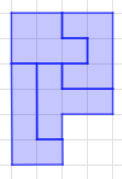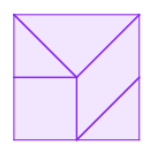Blog Posts
Here are links to posts on my Math Education Blog that you might find interesting.
If you are so moved, you may comment on the posts, and/or subscribe to the blog.
Math as Literacy
This may be the only country where there is an ongoing campaign against high school math — in the media, in the overall culture, and even within the profession. I have written a number of posts in response to that state of siege. Here is the ninth installment in that series.
An Assessment Conundrum
A math teacher's tweet got me to think about whether it is a good policy to require students to pursue a particular path to an answer. In this case, this was related to evergreen pedagogical questions: what is the place of formulas and shortcuts? how do we balance understanding and "efficiency"? Perhaps this post will help you and your colleagues think about these important questions.
Seen Elsewhere
I think I suffer a mild case of ADHD: I just don't have the patience to spend a lot of time looking at other people's math education articles and curricula. After a short time trying to do that, I usually realize I'd rather be reading a novel, riding my bike, or creating my own materials. Still, every once in a while, I manage to find interesting items elsewhere. In this post, I discuss three items I came across.
- Robert Wirtz created some interesting K-5 materials in the 1970's. In particular, I loved what I called his "flag" problems, which led me to exploring and generalizing the so-called McNuggets problem.
- I thought I knew everything a teacher needed to know about polyominoes. But this topic from recreational math is an endless source of interesting problems and puzzles. The Australian Maths Trust offers one I had never heard of, with the excellent title "Animal, Vegetable, or Mineral?"
- I now understand non-periodic tilings a little better, thanks to a coloring book and Wikipedia.
And in this post about Teachers' Mathematics, I link to an interesting and humorous lesson, intended to generate discussion and reflection about the properties of our number system. It is based on the idea of a fictional cashier who knows absolutely nothing about numbers. The worksheets were created by mathematician Robin Pemantle for use in a course for prospective teachers.
MathEducation.page
New on my Web site.
Rate of Change
Slope on a Cartesian graph and magnification in a function diagram are two representations of the concept of rate of change. The same concept can be explored in a table of values, on a geoboard, and even in a problem about pattern blocks. I share links to all this, and to relevant online applets in this new Rate of Change launch page.
Interactive Pages Are Popular!
According to Google, by far the most widely used page on my site is my GeoGebra-based Virtual Grid Paper. The second most popular is Virtual Pentominoes. So it seems like my virtual manipulatives remain useful even now that kids are back in school for face-to-face learning. I myself used my Virtual Tangrams to create the illustrations for my most recent blog post: Convex Tangram Polygons.


Teachers' need for an easy way to create figures is one key use of virtual manipulatives. When working with my Virtual Geoboard recently, I realized that it didn't lend itself to that use, so I made some changes, and I'm happy with the new version.
Finally, when a friend asked for a quick way to make Base Ten Blocks for worksheets, I created a Google Drawing for that purpose. Like my Virtual Lab Gear, it not only works for the teacher, but it also allows students to work individually or collaboratively when creating images to include in a report or poster.
- The other thing I learned from Google Analytics is that among the most popular pages on the site are three fairly lengthy and ambitious ones:
- - Proving Pick's Formula
- - The Geometry of the Parabola
- - Only Four Kinds of Isometries
- Interestingly, the last two of those include many interactive GeoGebra applets. Is that why they are popular?
Tweaks and Updates
- I added the Abstract Algebra launch page to the Directory of Directories
- I annotated the Directory of Directories, mostly with grade level information.
- I tweaked the Pent page, based on suggestions from George Mills.
- I tweaked the site’s home page to make the newsletter, rights, and email links more prominent.
- I tweaked the Geoboard and Tiling directory pages.
- I added a few sentences at the end of SuperTangram Labs.
- I added some solutions, and an extension to Lab 2.5 of Geometry Labs (“Convex Polygons” in the section about tangrams).
